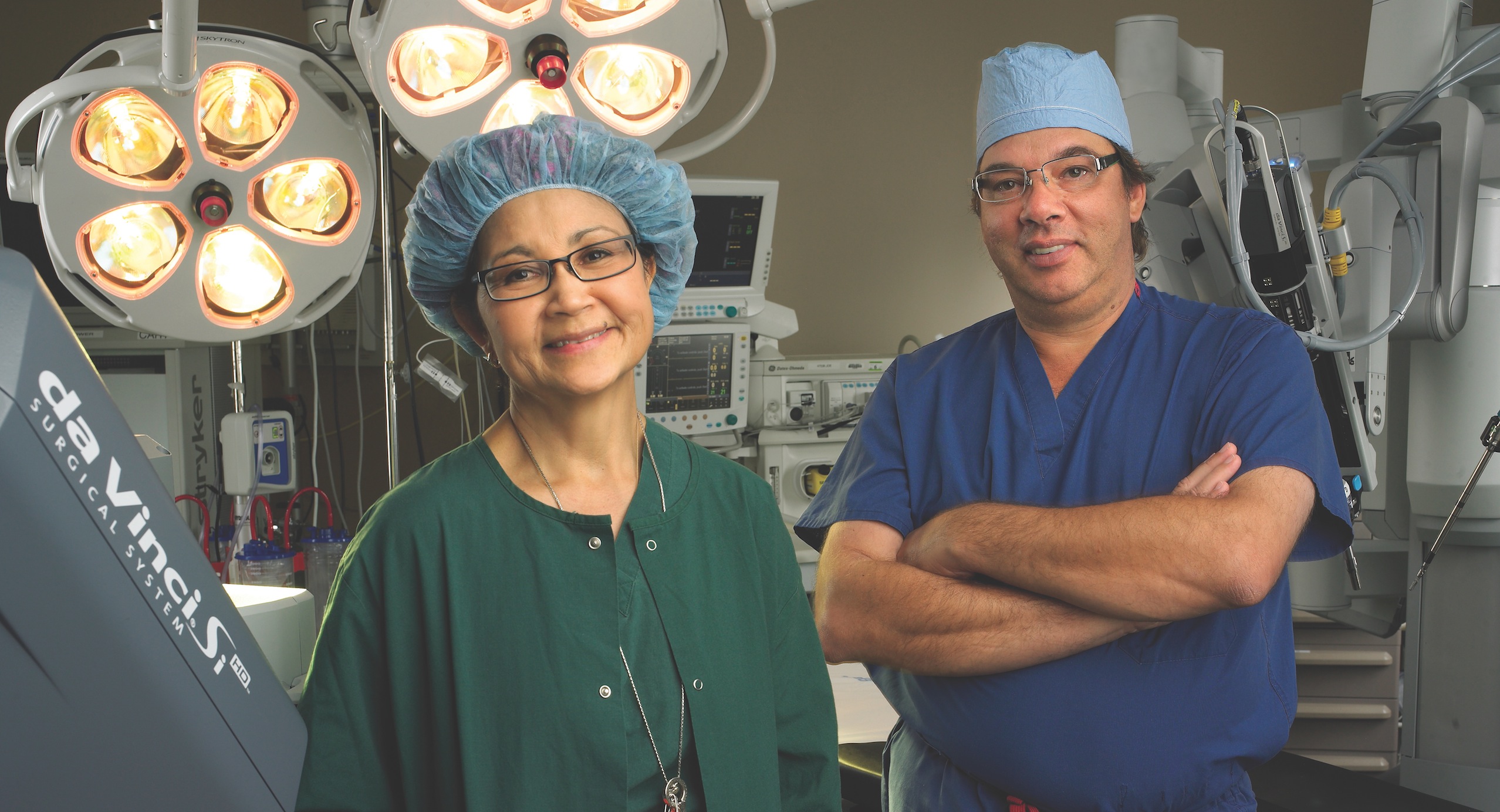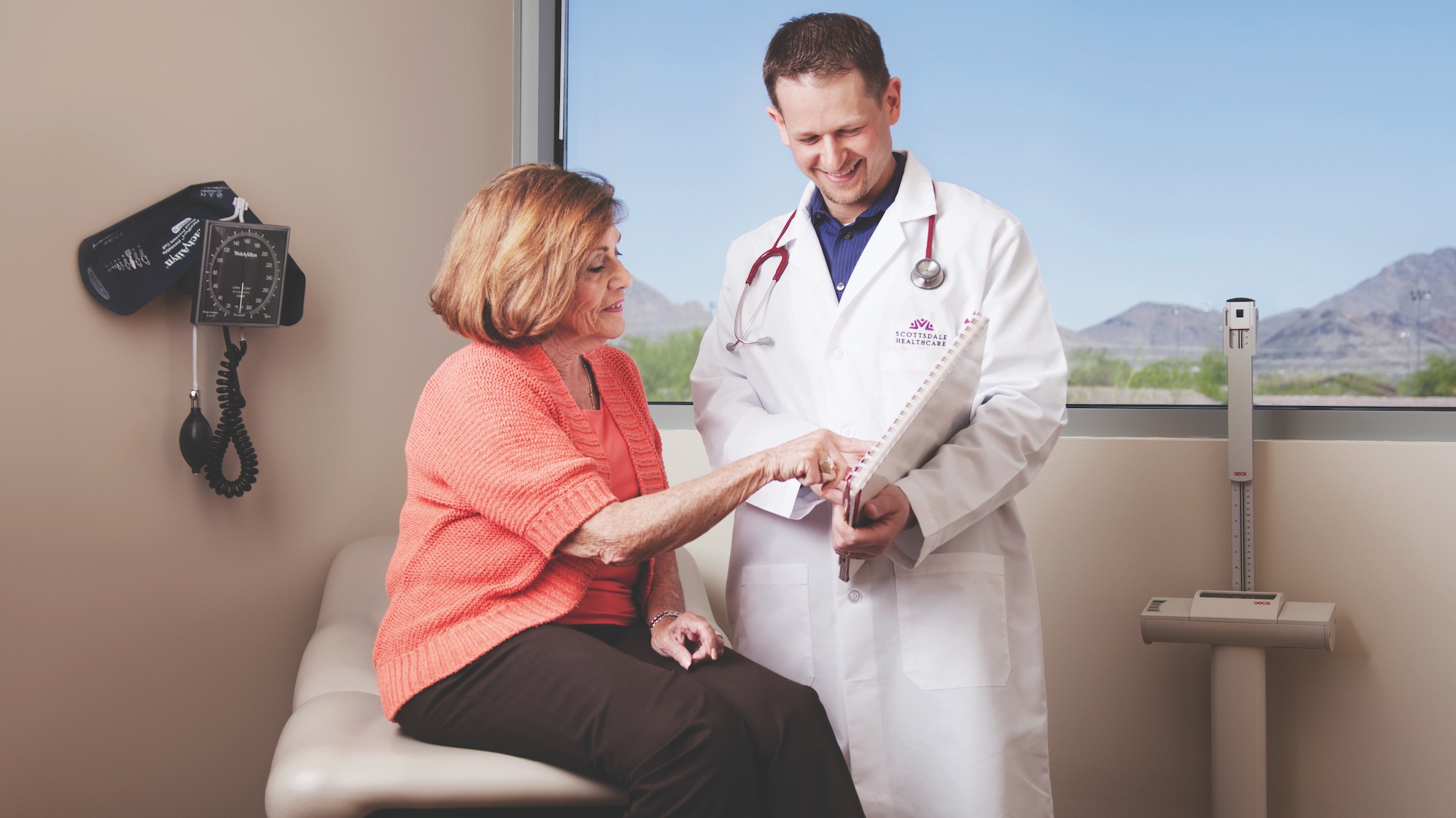Of course you’re not comfortable with the thought of having a colonoscopy. But ask yourself this: Are you comfortable with the thought of succumbing to the nation’s second-leading cause of cancer death? Especially when that colonoscopy you didn’t have could have helped avoid it?

“Colon cancer is probably the most preventable cancer because it usually doesn’t come out of the blue. It takes a long time,” says Andrew Kassir, MD, a board-certified colorectal surgeon at Scottsdale Healthcare hospitals. “A person is usually normal, and then develops polyps on the bowel wall,” he says. “Those polyps get bigger and can turn into cancer.”
That means it’s important to remove benign polyps, which often can be accomplished during – you guessed it – a colonoscopy. “By eliminating the polyps, you’re helping to eliminate the risk of cancer,” Dr. Kassir says.
According to Gavin Levinthal, MD, a board-certified gastroenterologist at Scottsdale Healthcare hospitals, polyps are found in approximately 30 percent of people older than age 50 and typically don’t cause any symptoms.
“While most polyps do not become cancerous, it can be difficult to tell which will or will not lead to disease, so all are removed,” Dr. Levinthal says. He recommends a screening colonoscopy starting at age 50, or age 40 if you have a family history of colorectal cancer or polyps. The outpatient procedure, he adds, isn’t as uncomfortable as you may imagine. Newer preparations and twilight sedation, where a patient is sedated but not unconscious, make the procedure much more comfortable than in the past.
Advantages of Minimally Invasive Techniques
While surgery is nearly always needed to successfully treat colorectal cancer, it doesn’t have to mean lengthy hospital stays and scars. Scottsdale Healthcare surgeons, including Dr. Kassir, perform many operations using minimally invasive techniques rather than making the long incision needed for traditional open surgery. This includes using one of three da Vinci robots at Scottsdale Healthcare, which acquired Arizona’s first da Vinci robot in 2001 and has the longest experience with the robotic surgery in the state.
For colorectal surgery patients, this typically means three or four incisions that are each less than one-third of an inch long. Another 1- to 1.5-inch incision is made to remove the unhealthy colon tissue. Compare that with the 5-inch incision generally needed during traditional open colorectal surgery, and you will understand why da Vinci surgery is called minimally invasive.
It has other advantages for patients, too. Robotic colorectal surgery patients generally are hospitalized only two or three days, versus five or six for open-surgery patients. They also benefit from a precise operation.
“You get a high-definition, 3-D view of the area where you’re operating, so surgery can be very accurate and precise,” Dr. Kassir says. “In some cases, you can remove the cancer with less injury to the surrounding nerves.”

Dr. Kassir performed the first robotic colon surgery in Arizona in 2009 at Scottsdale Healthcare. Today, surgeons from across the country travel to watch and learn during his robotic procedures.
“Robotic surgery for the colon is a recent development. Only a handful of centers nationwide offer it,” Dr. Kassir says, noting that good candidates for robotic colorectal surgery are those with rectal cancer or lower, rather than upper, colon cancer.
If you're 50 or older, live more and fear less by scheduling a colonoscopy consultation at Scottsdale Healthcare. Visit 50andfearless.org, or call 480-323-3801.
